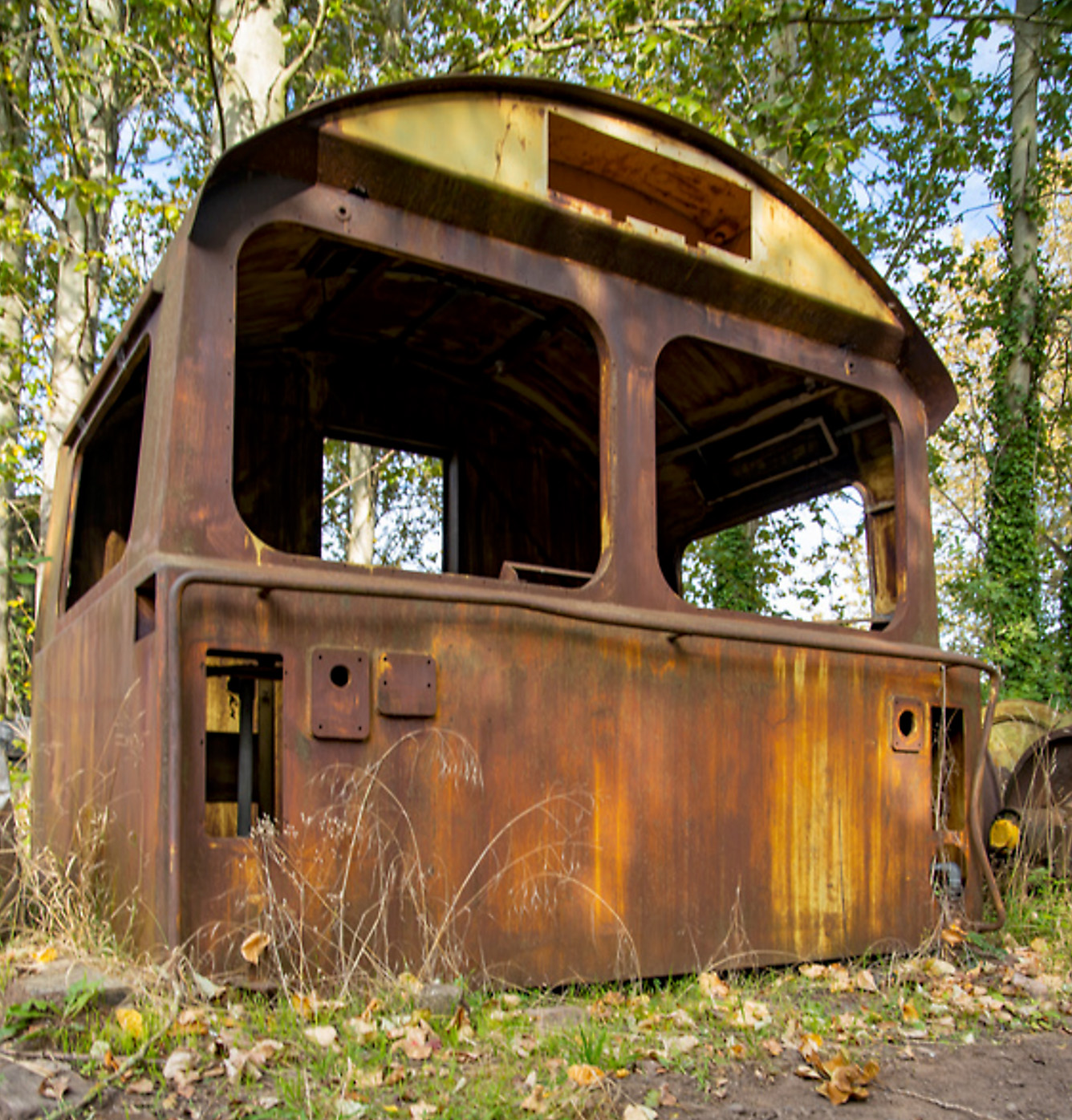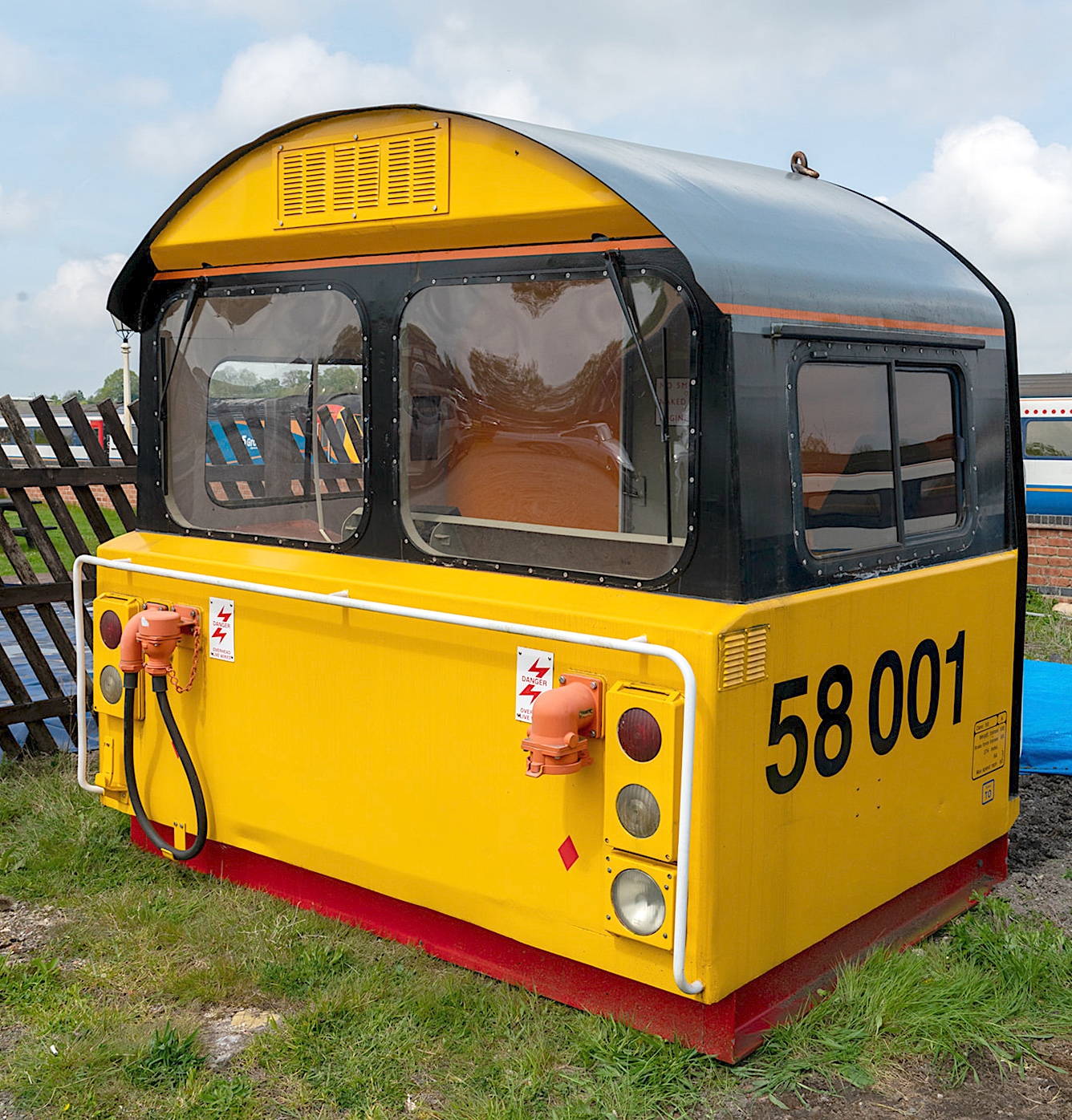Class 58 Spare Cabs
After completing the Class 58 project, British Rail Engineering Limited (BREL) at Doncaster constructed two additional spare cabs for the Class 58 locomotives. These additional cabs ensured operational flexibility and facilitated quick replacements in case of damage. These were just shells (the structural frame), with the idea that engineers would swap internal fixtures and controls from the cab being replaced.
Luckily, none of the fleet of 50 locomotives suffered significant damage, meaning that both cabs were left unused at the BREL site in Doncaster for over 20 years.
Importance of Spare Cabs
BREL Doncaster was known for its engineering excellence and played a crucial role in the British rail industry. The production of the spare Class 58 cabs was a testament to BREL's commitment to innovation and quality. These cabs were built to the same high standards as the original units, featuring robust steel construction and ergonomic design.
The additional cabs produced by BREL Doncaster were essential in maintaining the operational readiness of the Class 58 fleet. Freight locomotives are subjected to harsh conditions, and damage or wear due to their working conditions or accident damage to the cabs could result in significant downtime. With spare cabs readily available, British Rail could quickly replace damaged units, ensuring that freight operations remained uninterrupted. This capability was substantial in the late 1980s and into the 1990s when the demand for reliable freight transportation was high.
Sale of the Cabs
In the early 2000s, after all of the Class 58 locomotives had been removed from service in the UK, the two (very much unused) cabs were still on-site at the ex-BREL works in Doncaster. In 2006, these were both put up for sale, and at the time, the group managed to purchase one of the two examples.
The Cabs
The Class 58 Locomotive Group now owns both of these cabs, and below, we'll provide more details about each cab.
Cab No. 1

The first of the two cabs purchased by the group moved to its current home shortly after purchase. However, a few years later, when the group purchased Class 58 016, attention shifted to restoring the locomotive, and the cab sadly sat untouched.
The group plans to restore this cab, and updates will be available to group members throughout this process.
Cab No. 2

The second cab was purchased by a private individual and has been resold several times over the years. The most notable owner was Martin Baker, who completed much of the external restoration. Martin applied the number 58 001 to the driver's cab side. In 2023, Martin lent the cab to the group for the Rail Riders event in 2023 at Crewe Heritage Centre.
The group purchased the cab in early 2024, and it was moved to its new home at the Midland Railway Centre Butterley (photographed above) on May 1st of that year. Work is now underway to complete the cab's internal restoration.
Restoring the Cabs
Restoring and completing both Class 58 spare cabs is theoretically possible, but several factors would need to be considered:
- Availability of Parts
- Expertise and Resources Restoration would require a dedicated team of volunteers willing to assist in the restoration/completion of both cabs and those with particular knowledge of 1980s British locomotive design to oversee the work. While the group has blueprint designs and many photos, minor details could be missed without proper investigation. The financial resources required would also be substantial, depending on the extent of the restoration needed.
- Purpose of Restoration The intended purpose of the restoration would influence the approach. If the goal is to restore a cab for static display, the restoration might focus more on aesthetics. However, discussions have been held with several parties regarding the possibility of turning one of the cabs into a functional computer simulator.
Legacy and Impact
Today, the Class 58 locomotives' legacy and spare cabs live on among rail enthusiasts and in the annals of British railway history. The foresight in producing these additional cabs demonstrates the importance of strategic planning in railway operations. Although the Class 58 locomotives have been retired from regular service for over 20 years, the story of their spare cabs highlights a key chapter in the history of British engineering and railway management.
BREL Doncaster's strategic idea of producing additional and spare Class 58 cabs was to ensure the longevity and reliability of one of Britain's most iconic freight locomotives. These spare cabs were designed to minimize operational disruptions and underscored BREL Doncaster's importance in the broader narrative of British rail engineering. Whether you're a railway historian or an enthusiast, the story of these spare cabs is a fascinating glimpse into the practicalities and forward-thinking design of the Class 58s.
